Filter by
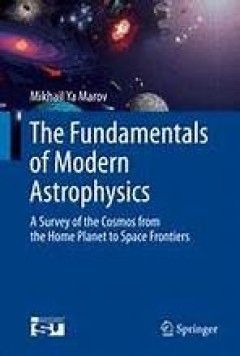
The Fundamentals of Modern Astrophysics
The Fundamentals of Modern Astrophysics provides an overview of the modern science of astrophysics. It covers the Sun, Solar System bodies, exoplanets, stars, and star life cycle, planetary systems origin and evolution, basics of astrobiology, our galaxy the Milky Way, other galaxies and galactic clusters, a general view of the Universe, its structure, evolution and fate, modern views and advan…
- Edition
- 1
- ISBN/ISSN
- 978-1-4614-8730-2
- Collation
- XIX, 336, 31 b/w illustrations, 185 illustrations in colour
- Series Title
- -
- Call Number
- -

The Formation and Disruption of Black Hole Jets
This book reviews the phenomenology displayed by relativistic jets as well as the most recent theoretical efforts to understand the physical mechanisms at their origin. Relativistic jets have been observed and studied in Active Galactic Nuclei (AGN) for about half a century and are believed to be fueled by accretion onto a supermassive black hole at the center of the host galaxy. Since the firs…
- Edition
- 1
- ISBN/ISSN
- 978-3-319-10356-3
- Collation
- XI, 264, 41 b/w illustrations, 46 illustrations in colour
- Series Title
- Astrophysics and Space Science Library
- Call Number
- -
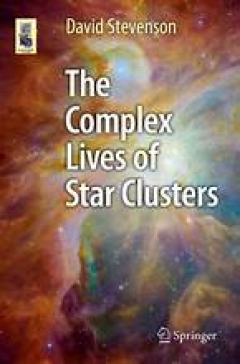
The Complex Lives of Star Clusters
As with the author’s recent books Extreme Explosions and Under a Crimson Sun, the complex topic of star clusters is broken down and made accessible with clear links to other areas of astronomy in a language which the non-specialist can easily read and enjoy. The full range of topics are addressed regarding how star clusters are formed. Why is it some are dense conglomerates of stars while oth…
- Edition
- 1
- ISBN/ISSN
- 978-3-319-14234-0
- Collation
- XV, 343, 64 illustrations in colour
- Series Title
- Astronomers' Universe
- Call Number
- -

A Breviary of Seismic Tomography: Imaging the Interior of the Earth and Sun
This is the first textbook to cover the essential aspects of the topic at a level accessible to students. While focusing on applications in solid earth geophysics, the book also includes excursions into helioseismology, thereby highlighting the strong affinity between the two fields. The book provides a comprehensive introduction to seismic tomography, including the basic theory of wave propaga…
- Edition
- -
- ISBN/ISSN
- 9780511984709
- Collation
- -
- Series Title
- -
- Call Number
- -
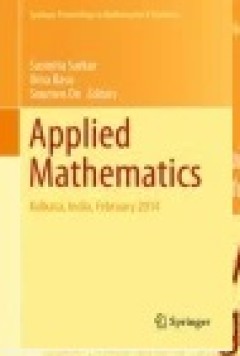
Applied Mathematics: Kolkata, India, February 2014
The book is based on research presentations at the international conference, “Emerging Trends in Applied Mathematics: In the Memory of Sir Asutosh Mookerjee, S.N. Bose, M.N. Saha and N.R. Sen”, held at the Department of Applied Mathematics, University of Calcutta, during 12–14 February 2014. It focuses on various emerging and challenging topics in the field of applied mathematics and theo…
- Edition
- Ed. 1
- ISBN/ISSN
- 978-81-322-2547-8
- Collation
- XXXVIII, 313
- Series Title
- Springer Proceedings in Mathematics & Statistics
- Call Number
- 530.15 APP a

3K: The Cosmic Microwave Background Radiation
What processes fixed the designs etched on the cosmic background radiation (CBR)? And what can they tell us about the early Universe, and the origin and evolution of cosmic structure? This review covers all aspects of three decades of study of this ghostly remnant of the hot Big Bang origin of the Universe, and examines the consequences for astrophysics, cosmology and theories of the evolution …
- Edition
- -
- ISBN/ISSN
- 9780511525070
- Collation
- -
- Series Title
- -
- Call Number
- -

A Decade of Extrasolar Planets around Normal Stars
Humans have long thought that planetary systems similar to our own should exist around stars other than the Sun, yet the search for planets outside our Solar System has had a dismal history of discoveries that could not be confirmed. However, this all changed in 1995, after which astonishing progress can be seen in this field; we now know of more than 200 extrasolar planets. These findings mark…
- Edition
- Mario Livio,Mario Liv,iJeff Valentio
- ISBN/ISSN
- 9780511536304
- Collation
- -
- Series Title
- Space Telescope Science Institute Symposium Series (19)
- Call Number
- -

The Tidal Disruption of Stars by Supermassive Black Holes An Analytic Approach
This book provides a general introduction to the rapidly developing astrophysical frontier of stellar tidal disruption, but also details original thesis research on the subject. This work has shown that recoiling black holes can disrupt stars far outside a galactic nucleus, errors in the traditional literature have strongly overestimated the maximum luminosity of “deeply plunging” tidal di…
- Edition
- -
- ISBN/ISSN
- 978-3-319-12676-0
- Collation
- -
- Series Title
- -
- Call Number
- -
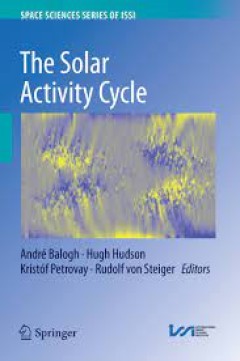
The Solar Activity Cycle Physical Causes and Consequences
A collection of papers edited by four experts in the field, this book sets out to describe the way solar activity is manifested in observations of the solar interior, the photosphere, the chromosphere, the corona and the heliosphere. The 11-year solar activity cycle, more generally known as the sunspot cycle, is a fundamental property of the Sun. This phenomenon is the generation and evolution …
- Edition
- -
- ISBN/ISSN
- 978-1-4939-2584-1
- Collation
- -
- Series Title
- -
- Call Number
- -
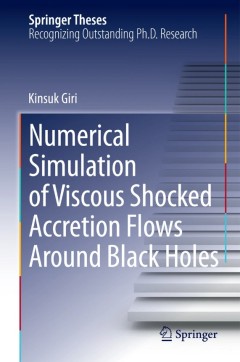
Numerical Simulation of Viscous Shocked Accretion Flows Around Black Holes
The work developed in this thesis addresses very important and relevant issues of accretion processes around black holes. Beginning by studying the time variation of the evolution of inviscid accretion discs around black holes and their properties, the author investigates the change of the pattern of the flows when the strength of the shear viscosity is varied and cooling is introduced. He succ…
- Edition
- 1
- ISBN/ISSN
- 978-3-319-09539-4
- Collation
- XXII, 129
- Series Title
- Springer Theses
- Call Number
- -
 Computer Science, Information & General Works
Computer Science, Information & General Works  Philosophy & Psychology
Philosophy & Psychology  Religion
Religion  Social Sciences
Social Sciences  Language
Language  Pure Science
Pure Science  Applied Sciences
Applied Sciences  Art & Recreation
Art & Recreation  Literature
Literature  History & Geography
History & Geography